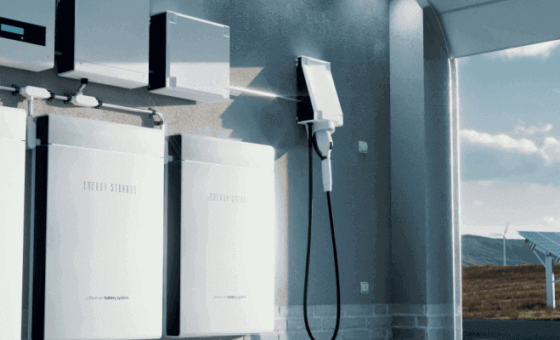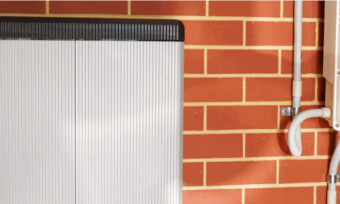Best Solar Feed In Tariff VIC
Looking for a better solar plan or provider in Melbourne? We compare plans and providers operating in and around Melbourne to help you find the best fit for your needs.

Start with your postcode
to compare 1,500+ Canstar Blue expert rated plans
Receive an additional $50 OFF your energy bill every year you have Kogan Energy & Kogan Internet. T&Cs apply
Showing 10 of 86 results
Unsure of a term in the above table? View glossary
The initial results in the table above are sorted by Solar feed-in tariff (High-Low) , then Price/year (estimated) including conditional discount (Low-High) , then Brand Satisfaction (High-Low) . Additional filters may have been applied, which impact the results displayed in the table - filters can be applied or removed at any time.
Latest in solar energy
Introduction to Solar Feed in Tariffs in VIC
There are so many reasons to install solar panels in Victoria, but most people just want to know how much they’ll be able to save on energy bills. Despite many contributing factors to any potential savings, the feed-in tariff (FiT) draws the most attention.
This figure dictates how much credit households will receive on their power bills for exporting leftover electricity back into the grid. But is it as simple as just signing up for the solar plan with the highest FiT?
There are more factors at play that impact the overall price Victorians pay for power. With this in mind, let’s take a peek at the best solar feed-in tariffs in Victoria, as well as some other features to look out for to help maximise returns on your solar investment.
On this page:
- Which provider has the best solar feed-in tariff in VIC?
- Best solar feed-in tariffs in VIC
- Which is the best solar energy provider?
- How do I know what my solar feed-in tariff is?
- Is there a minimum feed-in tariff in VIC?
- Are there solar-specific plans available in VIC?
- Feed-in tariffs vs energy rates: What’s more important?
- Is solar worth it in VIC?
Which provider has the best solar feed-in tariff in Victoria?
Engie currently offers the best solar feed-in tariffs (FiTs) in Victoria at the time of publication, with eligible customers receiving 12 cents per kilowatt hour (c/kWh) of energy exported to the grid. Following this is EnergyAustralia with 12c/kWh and Alinta Energy with 10c/kWh. Note that the Victorian energy regulator has set a minimum FiT rate of 3.3c/kWh for solar customers on a single rate tariff.
The best minimum and maximum solar feed-in tariffs in VIC
In the table below, you’ll find a list of minimum and maximum solar feed-in tariffs available from retailers in Victoria. Some of these companies may not operate in all areas of VIC, while some FiTs may only be available when certain conditions are satisfied. Please check each provider’s website for further details.
Here are the plans with the highest solar feed-in tariffs from the retailers on our database. These costs are based on the Citipower network in Melbourne but prices will vary depending on your circumstances. We show one product per retailer, listed in order of lowest price first. Annual price estimates assume general energy usage of 4000kWh/year for a residential customer on a single rate tariff. Price estimates exclude solar feed-in tariff credits. Our database may not cover all deals in your area, please check retailer websites for up to date information.
Here are the plans with the lowest solar feed-in tariffs from the retailers on our database. These costs are based on the Citipower network in Melbourne but prices will vary depending on your circumstances. We show one product per retailer, listed in order of lowest price first. Annual price estimates assume general energy usage of 4000kWh/year for a residential customer on a single rate tariff. Price estimates exclude solar feed-in tariff credits. Our database may not cover all deals in your area, please check retailer websites for up to date information.
Which is the best solar energy provider?
Lumo Energy is currently ranked as Australia’s best solar energy provider, topping our customer satisfaction ratings in 2025. The Aussie-owned company scored five-star reviews for its value for money, customer service, bill and cost clarity, ease of sign-up and overall satisfaction.
In Victoria, Lumo Energy currently offers two solar specific plans and feed-in tariffs of 3c kWh and 4.5c kWh depending on the plan.
How do I know what my solar feed-in tariff is?
- Your FiT will also be listed on the relevant energy fact sheet for your energy plan, which can be found at the bottom of your retailer’s homepage.
- Your feed-in tariff rate (in c/kWh) can be found in the ‘summary charges’ section of your energy bill — this section also provides information on the volume of energy exported back to the grid, and the bill credit you’ve received for it.
Is there a minimum feed-in tariff in VIC?
Yes, there are minimum feed in tariffs in VIC. Customers in Victoria can choose between the following FiT structures: flat and time-varying.
Flat minimum feed in tariff
Currently (1 July 2024 to 30 June 2025), Victorians on single rate tariffs are entitled to a minimum flat solar FiT rate of 3.3c/kWh.
From 1 July 2025 onwards, the minimum flat solar feed-in tariff will be revised to 0.04 c/kWh.
Time-varying minimum feed in tariff
Currently (1 July 2024 to 30 June 2025), Victorians who prefer a time-varying FiT may choose between the following options:
| Time-varying minimum rates | ||
|---|---|---|
| Option 1 | ||
| Overnight
Weekdays: 10 pm to 7 am Weekends: 10 pm to 7 am |
Day
Weekdays: 7 am to 3 pm, 9 pm to 10 pm Weekends: 7 am to 10 pm |
Early evening
Weekdays: 3 pm to 9 pm Weekends: n/a |
| 7.6 c/kWh | 2.8 c/kWh | 7.0 c/kWh |
| Option 2 | ||
| Shoulder
Everyday: 9 pm to 10 am 2 pm to 4 pm |
Off-peak
Everyday: 10 am to 2 pm |
Peak
Everyday: 4 pm to 9pm |
| 4.1 c/kWh | 2.1 c/kWh | 8.4 c/kWh |
Source: Essential Services Commission, May 2025
From July 1 2025 onwards, the minimum time-varying FiTs will be revised to the following:
| Time varying minimum rates | ||
|---|---|---|
| Option 1 | ||
| Overnight
Weekdays: 10 pm to 7 am Weekends: 10 pm to 7 am |
Day
Weekdays: 7 am to 3 pm, 9 pm to 10 pm Weekends: 7 am to 10 pm |
Early evening
Weekdays: 3 pm to 9 pm Weekends: n/a |
| 7.55 c/kWh | 0.00 c/kWh | 5.91 c/kWh |
| Option 2 | ||
| Shoulder
Every day: 9 pm to 10 am 2 pm to 4 pm |
Off-peak
Every day: 10 am to 2 pm |
Peak
Every day: 4 pm to 9pm |
| 1.42 c/kWh | 0.00 c/kWh | 6.57 c/kWh |
Source: Essential Services Commission, May 2025
Are there solar-specific plans available in VIC?
Yes, there are a handful of retailers who offer solar-specific plans marketed to customers with solar panels. However, some power companies may not always have them publicly listed. This means it’s best to check directly with the provider.
While a solar-specific plan sounds good on paper, you’ll need to double-check that the electricity rates have not been increased to cover a higher feed-in tariff.
Feed-in tariffs vs energy rates: What’s more important in VIC?
For Victorians, which is more important comes down to the choice that saves them the most on their power bills.
FiTs can positively impact your power bills by crediting you for solar-generated electricity exported back into the grid, but it’s important to study your plan’s finer details, such as usage charges and supply charges.
For example, a high FiT can only save you more if it outweighs any potentially higher base rates. Thankfully, plans with higher FiTs don’t always have higher base rates.
It’s also important to consider your personal circumstances:
- The size of your solar system
- If you’re thinking of net metering
- If installing a new system, its projected payback period
If your solar PV system produces a large amount of excess solar power, a higher FiT may justify increased electricity rates. Conversely, if you have a small system producing minimal excess energy, a plan with lower base rates but a lower FiT would be the cost-savvy choice.
Many Victorians may opt to use net metering, consuming their own solar power first before exporting the excess to the grid for a credit. While net metering influences your FiT earnings, remember to factor in the savings it provides from reducing your reliance on grid energy.
If you’re planning to install a solar system in Victoria, start by calculating the payback period – the time it takes for your solar savings to offset the initial installation cost.
Is solar worth it in VIC?
Solar is a huge investment, costing upwards of thousands of dollars, and that’s before you even have it installed. With such a hefty upfront cost, finding a good deal that can pay itself off over time will help you get the most from your solar system.
With a little bit of homework and understanding of which features are important to you, there are plenty of savings to be made, especially if you can cash in on a solar rebate.
About our electricity experts
 Tara Donnelly: Utilities Editor
Tara Donnelly: Utilities Editor
Tara Donnelly is Canstar Blue’s Utilities Editor, leading the team that focuses on energy, telecommunications and consumer technology. She has spent more than a decade covering these topics in Australia, the US and Canada, and has authored over 500 Canstar Blue articles.
Her expertise has seen her appear in national media including 9 News, 7 News, Sunrise, the ABC , The Australian Financial Review, 4BC Radio and The Sydney Morning Herald.
Tara has been nominated for multiple awards for her technology reporting, including Canstar Blue’s highly commended recognition for Best Consumer Technology Coverage in 2024.
She has a Bachelor of Communications from the University of Canberra and is passionate about simplifying complex subjects so consumers aren’t just informed, they’re connected and confident.
You can read more of Tara’s published articles and follow Tara on LinkedIn.
Meet the Editorial Team

Breanna Gream: Data Insights Team Lead
Breanna Gream is Canstar’s Data Insights Team Lead, and is responsible for developing the methodology and delivering Canstar Blue’s Value Ranking for the energy and telco sectors. She holds a dual degree in Business and Mathematics from the Queensland University of Technology, and enjoys using her skills to help consumers find more suitable utilities plans. Connect with Breanna on LinkedIn.
Meet the Research Team
Important information
For those that love the detail
This advice is general and has not taken into account your objectives, financial situation or needs. Consider whether this advice is right for you.




















